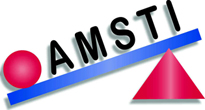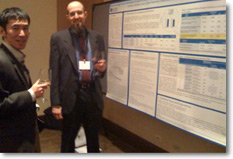The Value of Looking at Local Results
The report we released today has an interesting history that shows the value of looking beyond the initial results of an experiment. Later this week, we are presenting a paper at AERA entitled “In School Settings, Are All RCTs Exploratory?” The findings we report from our experiment with an iPad application were part of the inspiration for this. If Riverside Unified had not looked at its own data, we would not, in the normal course of data analysis, have broken the results out by individual districts, and our conclusion would have been that there was no discernible impact of the app. We can cite many other cases where looking at subgroups leads us to conclusions different from the conclusion based on the result averaged across the whole sample. Our report on AMSTI is another case we will cite in our AERA paper.
We agree with the Institute of Education Sciences (IES) in taking a disciplined approach in requiring that researchers “call their shots” by naming the small number of outcomes considered most important in any experiment. All other questions are fine to look at but fall into the category of exploratory work. What we want to guard against, however, is the implication that answers to primary questions, which often are concerned with average impacts for the study sample as a whole, must apply to various subgroups within the sample, and therefore can be broadly generalized by practitioners, developers, and policy makers.
If we find an average impact but in exploratory analysis discover plausible, policy-relevant, and statistically strong differential effects for subgroups, then some doubt about completeness may be cast on the value of the confirmatory finding. We may not be certain of a moderator effect—for example—but once it comes to light, the value of the average impact can also be considered incomplete or misleading for practical purposes. If it is necessary to conduct an additional experiment to verify a differential subgroup impact, the same experiment may verify that the average impact is not what practitioners, developers, and policy makers should be concerned with.
In our paper at AERA, we are proposing that any result from a school-based experiment should be treated as provisional by practitioners, developers, and policy makers. The results of RCTs can be very useful, but the challenges of generalizability of the results from even the most stringently designed experiment mean that the results should be considered the basis for a hypothesis that the intervention may work under similar conditions. For a developer considering how to improve an intervention, the specific conditions under which it appeared to work or not work is the critical information to have. For a school system decision maker, the most useful pieces of information are insight into subpopulations that appear to benefit and conditions that are favorable for implementation. For those concerned with educational policy, it is often the case that conditions and interventions change and develop more rapidly than research studies can be conducted. Using available evidence may mean digging through studies that have confirmatory results in contexts similar or different from their own and examining exploratory analyses that provide useful hints as to the most productive steps to take next. The practitioner in this case is in a similar position to the researcher considering the design of the next experiment. The practitioner also has to come to a hypothesis about how things work as the basis for action.



